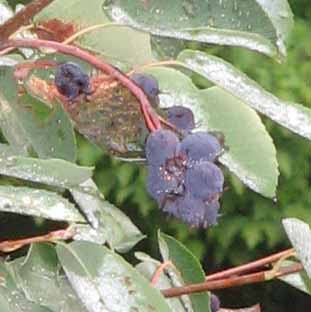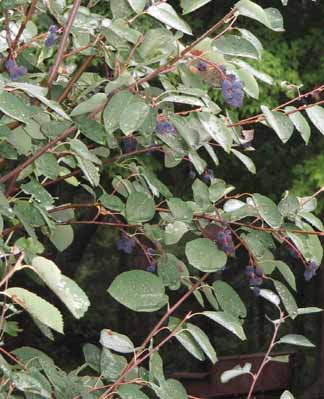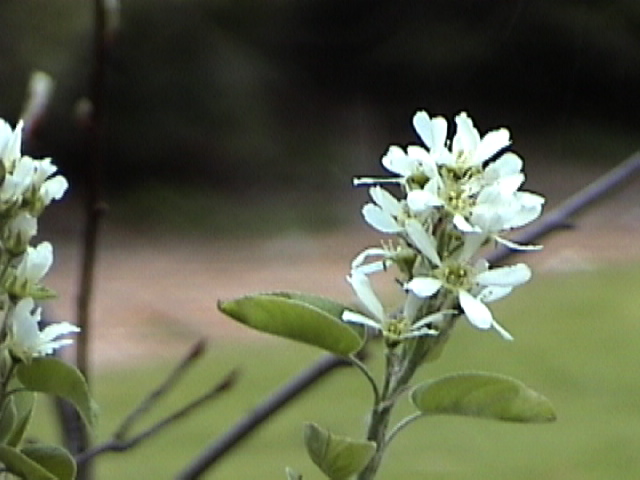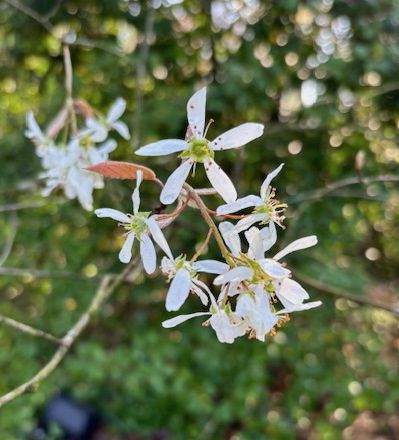Juneberry, Serviceberry - Amelanchier candensis
Native Americans made a tea from the root bark. The Chippewa used it to treat female problems, while the Cherokee used it for digestive troubles.
Chinese use this tree to make a worm medicine. Identifying and Harvesting Edible and Medicinal PlantsThis bush has been called Shadblow because its blooming coincides with the running of the shad in the rivers.The berries of this tree have been eaten by many peoples. ServiceberriesIt is a lovely small ornamental tree and grows wild in many places in the United States. This is a good candidate to plant near a bird feeder. It provides a twiggy shelter for the birds. Birds and mammals are attracted to the small red fruits. The leaves are a larval food (host plant) for swallowtail butterflies.
"Wood frogs and spring peepers often visit these in spring for insects; host plant for striped hairstreak and an underwing moth." Three Rivers Habitat Partnership

close up of ripening Juneberries
Identification and other facts / More facts / Further Facts
Juneberry

DISCLAIMER: These pages are presented solely as a source of INFORMATION and ENTERTAINMENT. No claims are made for the efficacy of any herb nor for any historical herbal treatment. In no way can the information provided here take the place of the standard, legal, medical practice of any country. Additionally, some of these plants are extremely toxic and should be used only by licensed professionals who have the means to process them properly into appropriate pharmaceuticals. One final note: many plants were used for a wide range of illnesses in the past. Be aware that many of the historical uses have proven to be ineffective for the problems to which they were applied.

